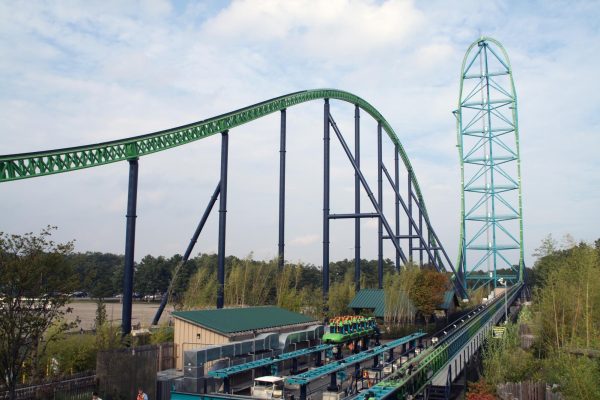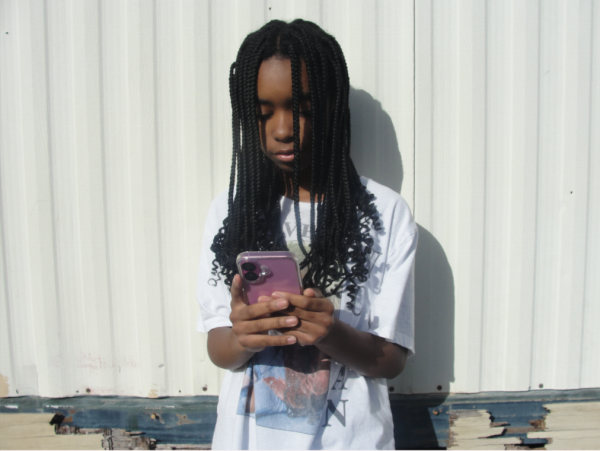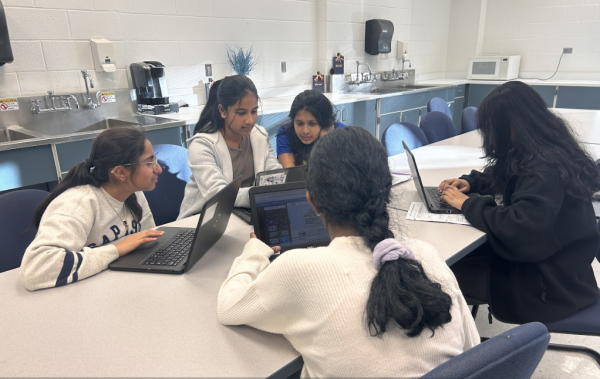Compost: A pile of fun
Learn the process of composting and the harmful affects of fertilizer.
Compost with a mixture of organic material.
Compost is a huge game changer when it comes to gardening. The benefits of it definitely outweigh the risks of using it and can positively impact your school environment and community.
However, many people think that composting is much more complex than what is actually done to produce it, and therefore, don’t want to put in the work to use it. The process of composting is a little more simple than what your everyday person on the street would think, and it’s worth the effort.
So, why is compost so important and relevant to us and our school community? To answer this extremely important question, a group of eighth-graders decided to test it. The experiment would be the comparison in efficiency and environmental impact between compost and fertilizer, an important part of the massive farming industry in the United States.
“Our project is about the comparison between compost and fertilizer and the different effects each of them has on the environment,” said John Kim, a member of the group.
To start, every one of the four group members gathered four cups and put soil in each of them. Then they added compost in two cups and fertilizer in the other two cups. Finally, they added one seed in two cups and another seed in the other two.
The results were astonishing. The compost was more efficient at growing the plants and is also known as much more eco-friendly alternative to man made fertilizer.
Fertilizer is a growth booster for plants, but poses a harmful threat to the environment. An example of this is how the runoff of this fertilizer from rain can flow into bodies of water, poisoning them.
A bigger problem, however, is how if fertilizer is leaked into a waterway, it will increase the algae growth, forcing it to block the sun’s rays from entering the water.
This does not provide the necessary amounts of sunlight for submerged aquatic vegetation, which causes them to die out, causing the nearby organisms to not have much food to eat.
The problem, eutrophication, is a large obstacle and can be prevented by limiting our use of fertilizer and other chemicals in gardening.
This is why compost is very important and relevant to us. Not only does it gives a use for fruit peels and other seemingly unusable items, but it averts the harmful effects of fertilizer. Compost is a huge step forward for society and the future for our environment.
How to make compost:
First, you have to collect the necessary materials needed to begin the creation of compost. To begin, you will need a 3-foot pile of organic material to start the “cooking.”
Some examples of organic material include fruit peels, green and brown materials, egg shells, vegetable scraps, dry leaves, chopped wood, and shredded newspaper.
Water the pile and turn it over once a week. If the pile is warm, it should be undergoing the composting process. No signs of warmness could indicate rotting.
Continue this method over a course of three months and monitor the temperature of the pile. Once it no longer gives off heat and turns brown, your compost should be finished. Voila!
To actually use the compost, put between 4 and 6 inches of this finished compost into whatever you are trying to plant. Whether it is a flower pot, or a big area of land, you can use this compost for anything.
And while this process isn’t too complex or costly, many people don’t have the time to make their own compost, so buying it is another viable option.
Big chains such as Home Depot to small stores sell compost, and while this isn’t as fresh as homemade compost, it will get the job done in an environmentally friendly way.




